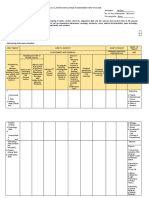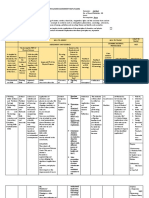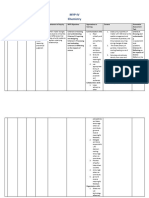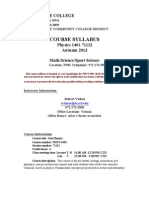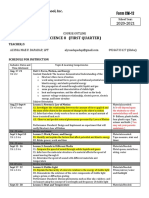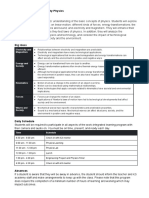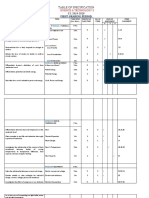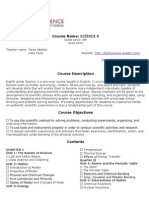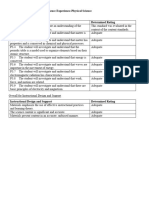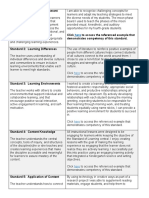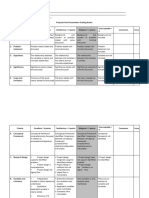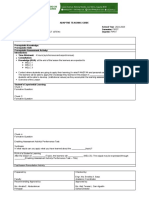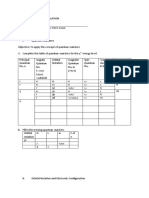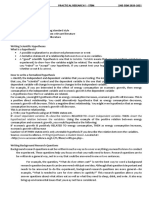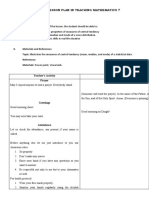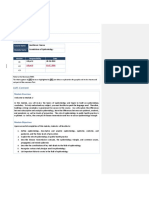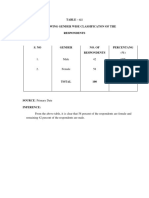0% found this document useful (1 vote)
309 views4 pagesApplication of Mechanics To Everyday Life
This document provides information about a physical science course for grades 11-12, including:
- The course is for one semester and involves 80 hours of instruction in physics concepts from ancient times to present, along with applications in various contexts.
- The culminating project requires students to create an informercial showcasing applications of chemistry and physics principles and their social, political, economic, cultural, health and environmental implications.
- Two sample evaluation mechanisms are provided to assess student competencies like communication, thinking, technology and problem solving skills.
Uploaded by
Mai SasaCopyright
© © All Rights Reserved
We take content rights seriously. If you suspect this is your content, claim it here.
Available Formats
Download as DOCX, PDF, TXT or read online on Scribd
0% found this document useful (1 vote)
309 views4 pagesApplication of Mechanics To Everyday Life
This document provides information about a physical science course for grades 11-12, including:
- The course is for one semester and involves 80 hours of instruction in physics concepts from ancient times to present, along with applications in various contexts.
- The culminating project requires students to create an informercial showcasing applications of chemistry and physics principles and their social, political, economic, cultural, health and environmental implications.
- Two sample evaluation mechanisms are provided to assess student competencies like communication, thinking, technology and problem solving skills.
Uploaded by
Mai SasaCopyright
© © All Rights Reserved
We take content rights seriously. If you suspect this is your content, claim it here.
Available Formats
Download as DOCX, PDF, TXT or read online on Scribd
/ 4
